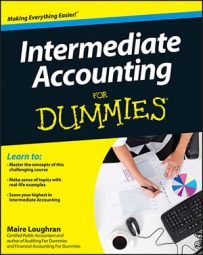Interperiod tax allocation means you recognize the tax effect of accounting events in the years in which the events are recognized for financial reporting purposes. By doing this, you’re matching income tax expense with the related revenues.
Although there are several different allocation methods, GAAP currently requires that companies use the asset-liability method for interperiod tax allocation. If the Financial Accounting Standards Board (FASB) and GAAP prefer one method over another, you can bet the farm that the preferred method comes the closest to giving users of the financial statements consistent and comparable results.
Your GAAP guide may truncate this to just the liability method. Don’t let that confuse you: Both terms mean the same thing.
The asset-liability method provides these desired results through the use of the following four principles:
Recognize a current tax liability or asset, with the associated estimated tax payable or refund on the current tax return.
Recognize the same for the estimated future tax effect of all temporary differences.
You ignore permanent differences, because they won’t ever be the same book versus tax.
Use enacted tax laws and rates to measure the effect of the deferred tax liabilities and assets; don’t look into the crystal ball to guess what the IRC and tax rates may change to in the future.
Establish a valuation account to reduce any deferred tax assets that the company likely won’t be able to utilize (with a higher than 50 percent chance of this).

